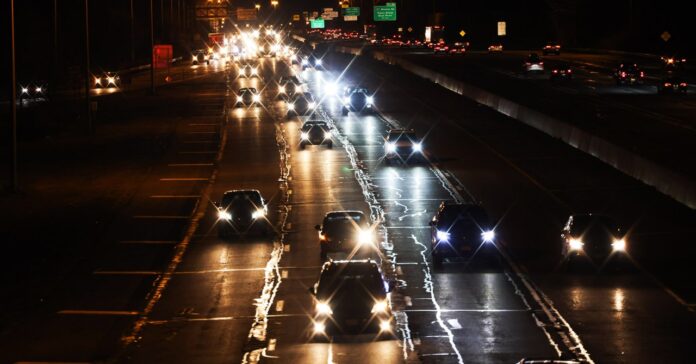The US government took the first step Tuesday toward requiring new cars to have technology that checks whether the driver is drunk.
At an event in Washington, DC, officials with the National Highway Traffic Safety Administration, the nation’s top road safety regulator, said the technology could help prevent thousands of annual road deaths involving alcohol. Almost 13,400 people died in US alcohol-related crashes in 2021 alone, NHTSA figures say.
The agency is still exploring how best to precisely detect and measure impairment in drivers and would seek multiple rounds of public input before creating any regulations to force automakers to include the feature. Industry and academic research has shown that it’s possible to detect evidence of impairment using air sensors in a vehicle to recognize alcohol in a person’s breath, touch sensors that look for alcohol in the blood, or by a tracking driver’s gaze or steering.
The NHTSA says that any technology that becomes standard would have to be “passive,” meaning it would have to work without any specific action from a driver such as blowing into a breathalyzer tube.
“Today’s announcement sets the groundwork for impaired driving rulemaking that will seek the most mature and effective technology,” Polly Trottenberg, the deputy secretary of the US Department of Transportation, said at the event Tuesday. Translation: It’ll be a while until technology to detect drunkenness becomes a required standard. Don’t expect your next car to come with an anti-drunk-driving feature.
Congress directed the NHTSA to create regulations requiring “advanced drunk and impaired driving prevention technology” in vehicles in 2021’s Bipartisan Infrastructure Law. But the process of creating new vehicle regulations can take months and even years, as regulators collect input from industry, researchers, and the public.
In a document accompanying Tuesday’s announcement, regulators laid out several open questions around anti-drunk-driving technology that made clear the NHTSA’s plans are at an early stage: What’s the best way to determine whether someone is drunk or drowsy or distracted, and should the car treat those impairments differently? What should a car do if it determines its driver is drunk? And—critically—is there a way to guarantee that systems will never lock out people who aren’t drunk?
Even if reasonable answers can be found for those questions, the technology would also have to survive the court of public opinion. “The public will reject this if the false positives are too high,” says James C. Fell, a principal research scientist who studies impaired driving at the National Opinion Research Center at the University of Chicago, an independent research organization. “You don’t want to stop people from driving who are not impaired.”
Regulators seemed to acknowledge that this tech could prove unpopular. “Misbelief that there exists a right to drive while drunk have resulted in some individuals believing that this rulemaking is pursuing a course of action that might unduly infringe upon their rights,” the agency wrote.
Research into anti-drunk-driving technology has gone on for decades, and four main technologies stand out. Sensors embedded in steering wheels or dashboards can detect levels of alcohol and carbon dioxide in a driver’s breath. Touch-based sensors in a steering wheel or other surface can use infrared lights to determine the blood alcohol content in capillaries just below the skin’s surface.
And driver-monitoring systems, which are already common in new cars with advanced driving-assistance technologies, could use eye or head tracking to determine whether a person is likely impaired. Similarly, many vehicles can already detect lane departures and erratic steering, potentially providing extra signals of possible inebriation.
Federal regulators said that while they believed the direction from Congress in the Infrastructure Bill intended for the NHTSA to require anti-drugged-driving technology too, the current process will focus only on alcohol.
Adding anti-drunk-driving technology to vehicles will cost automakers and could push up vehicle prices. Plus, drivers might blame their cars if the tech goes wrong—perhaps leading a frustrated public to turn against the technology altogether. The Alliance for Automotive Innovation, a trade organization that represents most global automakers, says it is reviewing the NHTSA’s initial proposals. “Every single day automakers are working to make vehicles safer and smarter and to help address avoidable tragedies caused by behavior like drunk driving,” said Brian Weiss, the group’s spokesperson, in a statement.
Whatever method—or combination of methods—the government chooses, anti-drunk-driving technology that works should reduce the toll of traffic crashes, says Fell. Programs that try to change driver attitudes and behaviors such as education campaigns or courses aren’t always very effective, he says. “If you can use technology, that will go a long way to preventing impaired driving—and especially if these systems are as good as I think they are.”
Source : Wired






